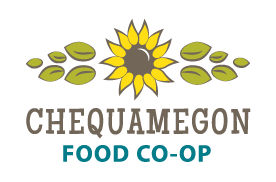By Axel Peterman
I know a few patches of stinging nettles within easy walking distance of my house, and this spring I’ve visited them regularly, gloves and canvas bag in my back pocket. Nettle greens are like spinach on steroids, and I pick the tender new growth, being careful not to take too much. No more than one out of ten or so of whatever I’m harvesting. That way I get greenery for myself, while leaving plenty for the plant, or for whatever other hungry animal might come along.
To me, foraging is less about putting food on the table that it is about building a connection between myself and the place where I live. It’s well known in outdoor education (which is the field in which I have my degree) that a person who is aware of and has developed a relationship with their local ecosystem will be more likely to make an effort to care for it than if they feel isolated and distant from it. I make a significant effort to maintain that relationship.
I don’t necessarily need for my entire diet to be wild-sourced. In fact, most of what I eat I still buy from the grocery store. Not only does maintaining a diet composed exclusively of foraged foods sound like extremely hard work, it’s also not terribly sustainable.
If every person on earth were suddenly to switch their entire diet over to locally wild-foraged foods, few of those wild foods would last long. There are simply too many people living on the planet today and often in too tightly-packed hubs for foraging alone to sustain them. Plant populations in the vicinity of major cities would be destroyed, and those in more rural areas would likely suffer heavily as well.
Few cultures historically have depended entirely on foraging. Europeans have been farming for about 6 thousand years, and First Nations peoples in the Americas have been growing crops for even longer. Until recently though, all of these cultures continued to supplement their diets with wild foods, seeing them as an important link with the natural world.
Unfortunately, in this age of caution, children are increasingly being raised cut off from the delicious, wild world. They pick a crabapple from a tree and are told by protective and unwitting parents “Don’t eat that, it’s poisonous! If you’re hungry you can have some chips later.” Watching their child get stung trying to eat a nettle leaf (which would hurt a bit but probably wouldn’t do any real harm) might be sufficient justification for most modern parents to never let their offspring eat a wild thing again. Given the current and increasingly degraded state of our global ecosystem, this widening disconnect is a major problem.
I can pretty much guarantee that in any patch of greenery in your neighborhood, there will be something edible. The most significant step to incorporating it into your diet is education, overcoming a little trepidation by gaining confidence in your ID skills. There are a lot of great resources out there. Foraging books will tend to have more reliable information that the internet, so I recommend taking that route, but the internet can be great as well if you find a dependable source. If possible, ask a person! Experienced foragers tend to be in the minority, but they’re definitely out there.
The significance of occasionally picking and eating a mess of wild nettle leaves from down the street is easily lost in modern life, but foraging is a wonderful way to invest yourself in your local ecosystem. More than that, it’s one that can be adopted easily and sustainably.
Axel Peterman is an educator, a graduate of Northland College, and a cashier at the Chequamegon Food Co-op.

